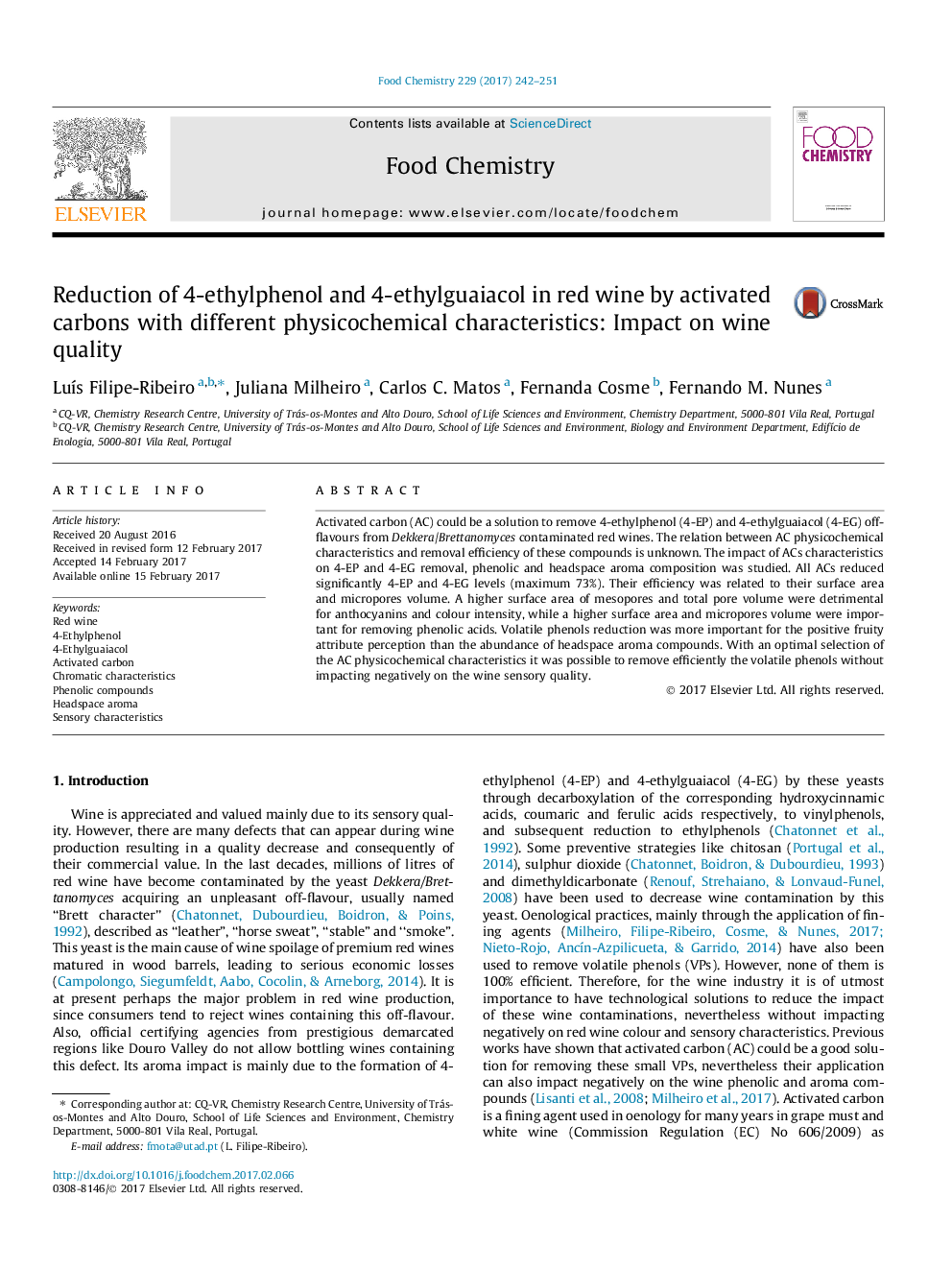| Article ID | Journal | Published Year | Pages | File Type |
|---|---|---|---|---|
| 5133626 | Food Chemistry | 2017 | 10 Pages |
â¢Activated carbon impact on wine composition is dependent on their characteristics.â¢Superficial area and volume of micropores increase volatile phenol removal efficiency.â¢High mesopore area and total pore volume reduced anthocyanins and colour intensity.â¢Red wine fruity attribute is recovered when phenolic defect is removed.â¢Optimal selection of activated carbon characteristics is essential for wine quality.
Activated carbon (AC) could be a solution to remove 4-ethylphenol (4-EP) and 4-ethylguaiacol (4-EG) off-flavours from Dekkera/Brettanomyces contaminated red wines. The relation between AC physicochemical characteristics and removal efficiency of these compounds is unknown. The impact of ACs characteristics on 4-EP and 4-EG removal, phenolic and headspace aroma composition was studied. All ACs reduced significantly 4-EP and 4-EG levels (maximum 73%). Their efficiency was related to their surface area and micropores volume. A higher surface area of mesopores and total pore volume were detrimental for anthocyanins and colour intensity, while a higher surface area and micropores volume were important for removing phenolic acids. Volatile phenols reduction was more important for the positive fruity attribute perception than the abundance of headspace aroma compounds. With an optimal selection of the AC physicochemical characteristics it was possible to remove efficiently the volatile phenols without impacting negatively on the wine sensory quality.
